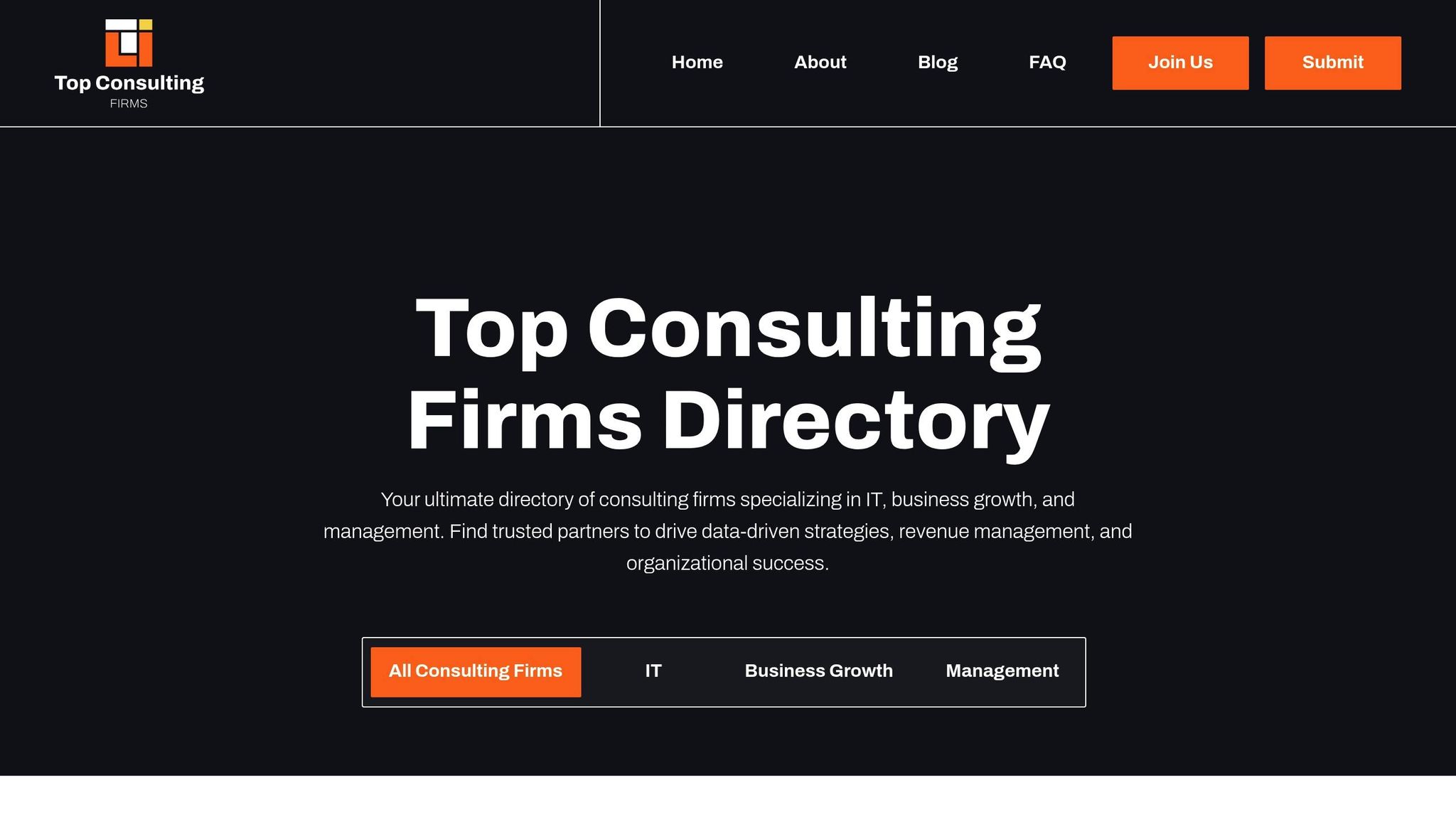- What It Is: Retailer collaboration means teaming up with retailers to share resources, launch joint campaigns, and reach broader audiences.
- Why It Works: It saves costs, expands reach, boosts credibility, and delivers better results.
- Challenges: Common issues include brand alignment, unclear resource allocation, and data sharing. Solutions include clear agreements, brand guidelines, and strong data practices.
- How to Succeed:
- Pick partners with aligned values, audience, and resources.
- Define clear roles for both brand and retailer teams.
- Use joint efforts like co-branded product launches, synchronized campaigns, and unified online-store programs.
- Measure Success: Track sales, customer behavior, and operational efficiency through metrics like ROI, customer satisfaction, and campaign timelines.
Quick Overview of Key Steps:
- Set shared goals and expectations.
- Choose the right retail partners.
- Build a clear collaboration plan with defined roles.
- Align physical and digital marketing efforts.
- Monitor performance and refine strategies.
Start your collaboration by focusing on clear communication, measurable goals, and consistent branding to ensure success.
Building Your Collaboration Plan
Choosing Retail Partners
Picking the right retail partners is a crucial step in any joint marketing effort. Look for partners whose brand values, target audience, and market position align with your own. Use the following criteria to guide your evaluation:
| Criteria | What to Assess | Why It Matters |
|---|---|---|
| Market Reach | Geographic coverage and customer demographics | Ensures campaigns are relevant and impactful |
| Brand Alignment | Values, messaging, and reputation | Protects your brand’s image and trust |
| Resource Capability | Marketing budget, team size, technology | Defines what’s possible in execution |
| Past Performance | Previous collaboration success, market stability | Shows reliability and partnership potential |
Once you've identified the right partners, clearly define roles to ensure smooth coordination.
Team Responsibilities
For a successful collaboration, every team needs a clear set of responsibilities. Here's how you might divide the work:
-
Brand Team
Your internal team should manage brand guidelines, creative direction, messaging, asset creation, compliance oversight, performance tracking, and budget management. -
Retailer Team
The retailer’s team typically focuses on in-store execution, local customization, data analysis, and staff training. -
Joint Working Group
Form a cross-functional team that meets regularly to monitor progress, solve challenges, adjust strategies, and exchange insights.
For more complex collaborations, you might want to bring in retail strategy consultants. Using tools like the Top Consulting Firms Directory, you can find experts who can help define roles, set up communication processes, and establish accountability systems to keep everyone on the same page.
Marketing Partnership Options
Joint Product Launches
Launching a product together can amplify its impact by combining the strengths of both partners. To make it work, coordination is key across several areas:
| Component | Your Role | Retailer Role |
|---|---|---|
| Product Development | Focus on design and features | Provide market insights |
| Launch Timeline | Handle production and inventory | Manage store placement |
| Marketing Assets | Supply brand guidelines | Customize for local needs |
| Distribution | Oversee the supply chain | Execute in stores |
| Analytics | Deliver performance metrics | Share sales data |
In addition to product launches, running integrated campaigns can further align efforts and maximize results.
Combined Marketing Campaigns
Collaborative campaigns are a great way to reach more people by combining resources across multiple channels. Key components include:
- Media Planning: Coordinate paid advertising to avoid overlap.
- Content Creation: Tell a unified story across platforms.
- Promotional Timing: Align discounts and offers for maximum impact.
- Customer Journey: Ensure smooth transitions between touchpoints.
These campaigns help tie together physical and digital efforts, creating a more connected retail experience.
Store and Online Programs
Retail partnerships thrive when physical and digital experiences work together seamlessly.
Digital-to-Store Programs:
- Integrate store locators into online platforms.
- Offer click-and-collect services.
- Show local inventory availability.
- Provide mobile navigation for stores.
Store-to-Digital Activation:
- Use product QR codes for instant online access.
- Link mobile apps to in-store experiences.
- Encourage digital loyalty program sign-ups.
- Create social media-friendly zones in-store.
Unified Experience Essentials:
- Maintain consistent pricing across platforms.
- Ensure products are available both in-store and online.
- Deliver the same level of service everywhere.
- Stick to clear, cohesive brand messaging.
- Simplify returns regardless of purchase channel.
Bringing together in-store and online efforts strengthens customer trust and ensures a seamless shopping experience, no matter where they interact with your brand.
Partnership Marketing: A Winning Strategy for Profitable Growth
sbb-itb-97f6a47
Partnership Success Guidelines
Once your collaboration plan is in place, having clear guidelines ensures that everything aligns with your goals.
Communication Methods
Strong communication is the backbone of any successful retailer partnership. Start by setting up clear channels and protocols:
| Communication Type | Purpose | Frequency |
|---|---|---|
| Status Meetings | Track progress and address issues | Weekly |
| Performance Reports | Share metrics and insights | Monthly |
| Strategy Sessions | Plan future initiatives | Quarterly |
| Emergency Protocol | Manage urgent situations | As needed |
| Documentation Hub | Store guidelines and assets | Always accessible |
Make sure both parties have access to a centralized hub for campaign materials, performance data, and updates. This setup keeps everyone on the same page and reduces confusion about the latest information. Once communication is solid, focus on tracking performance.
Results Measurement
Track the success of the partnership using specific metrics:
Sales Metrics:
- Year-over-year sales growth
- Changes in market share
- Average transaction value
- Customer acquisition cost
- Return on marketing investment (ROMI)
Customer Behavior Metrics:
- Purchase patterns across channels
- Brand awareness levels
- Customer satisfaction scores
- Engagement with loyalty programs
- Repeat purchase rates
Regularly review these metrics to refine your strategies. Accurate tracking ensures your efforts stay aligned with your goals.
Brand Guidelines
Clear brand standards are key to consistent joint marketing efforts.
Key Brand Elements:
- Logo placement and usage rules
- Color palette specifications
- Typography guidelines
- Image style preferences
- Tone of voice instructions
Quality Control Steps:
- Develop a shared brand guidelines document.
- Set up approval workflows.
- Conduct regular audits for compliance.
- Collect and implement feedback.
- Use a digital asset management system.
When teams work together on campaigns, detailed brand guidelines eliminate confusion and ensure consistent messaging across all platforms, whether in-store or online. This consistency is critical for maintaining a unified brand presence.
Measuring Success
Performance Metrics
Keep an eye on key performance indicators (KPIs) to evaluate how well your joint marketing efforts are working:
Financial Performance:
- Revenue growth
- ROI from joint campaigns
- Cost-per-acquisition (CPA)
- Changes in market share
Customer Metrics:
- Cross-shopping trends
- Customer lifetime value (CLV)
- Brand affinity scores
- Net Promoter Score (NPS)
Operational Efficiency:
- Campaign timelines
- Efficient use of resources
- Partner response times
- Deployment of assets
Results Analysis
Dive into performance data to identify what’s working and where adjustments are needed. Use these approaches:
Regular Performance Reviews:
- Weekly tracking of campaign metrics
- Monthly evaluations of partnership health
- Quarterly strategic reviews
- Annual assessments of overall collaboration
Set up a clear framework for analyzing results:
| Analysis Component | Frequency | Key Focus Areas |
|---|---|---|
| Campaign Performance | Weekly | Sales lift, engagement, and conversions |
| Partnership Health | Monthly | Communication and resource allocation |
| Strategic Impact | Quarterly | Market position and competitive edge |
| ROI Assessment | Annually | Value creation and resource efficiency |
Use these insights to refine and enhance your partnership strategies.
Growing Partnerships
Strengthen and expand your partnerships through targeted actions:
Expanding Opportunities:
- Take successful programs into new markets
- Experiment with new collaboration models
- Enhance data-sharing processes
- Develop exclusive joint offerings
Building Stronger Relationships:
- Foster executive-level connections
- Create cross-functional teams
- Share market insights consistently
- Co-invest in technology solutions
For more complex partnerships, consider seeking advice from experts. The Top Consulting Firms Directory can help you connect with specialists in retail partnerships and joint marketing strategies.
Conclusion
Partnership Value
By focusing on clear strategies and well-defined roles, collaborations between retailers and brands can lead to shared growth. These partnerships pool resources, broaden audience reach, and boost customer engagement. They also streamline operations and strengthen market presence.
Getting Started
Kick off your retail partnership with these practical steps:
- Set clear objectives with measurable goals.
- Choose partners that align with your brand values and target audience.
- Experiment with pilot programs to test collaboration models.
- Create clear communication and reporting systems.
These steps lay the groundwork for a successful campaign.
Top Consulting Firms Directory

Looking for expert advice? The Top Consulting Firms Directory connects you with specialists in areas like digital transformation, revenue growth, and strategic management.


